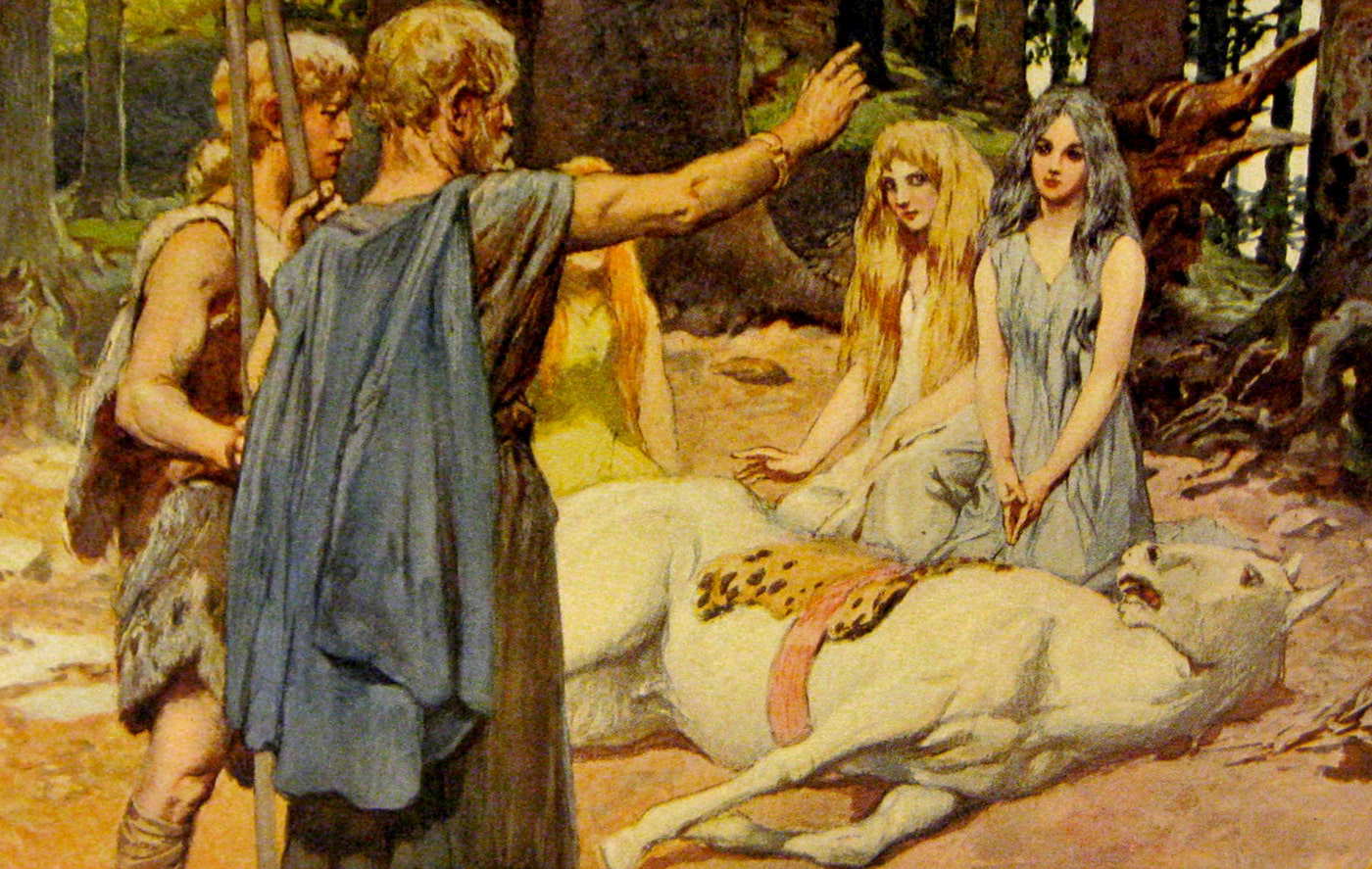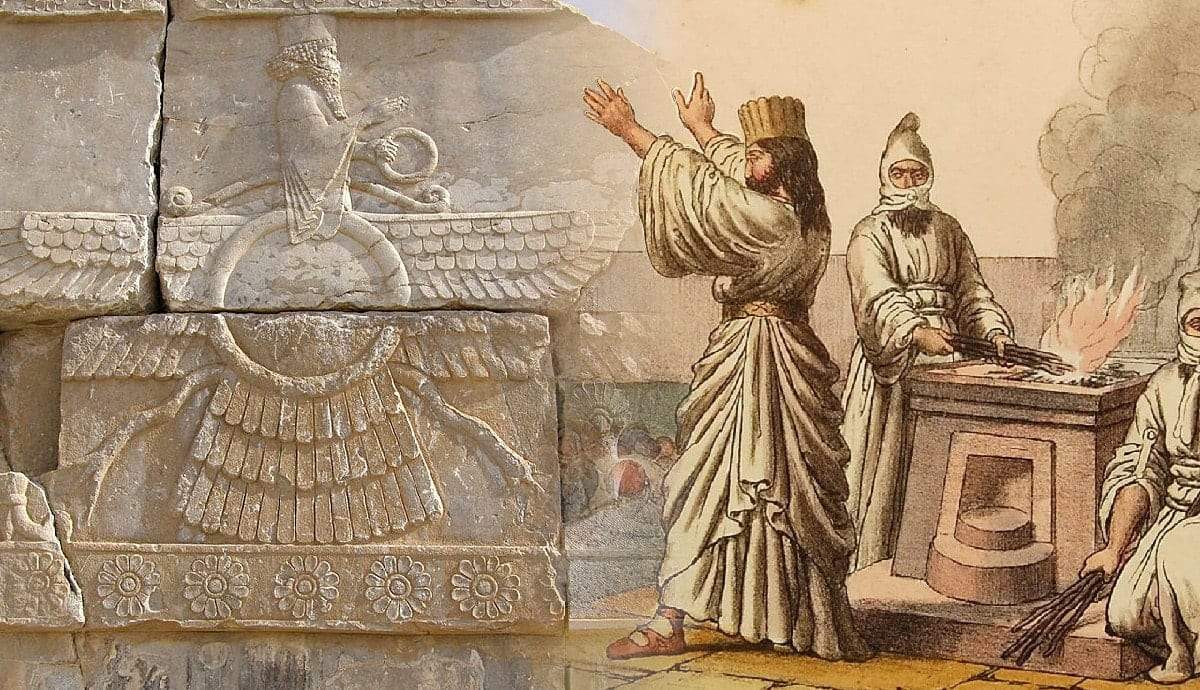
In recent years, there has been a resurgent interest in Pagan religions, or religious practices that operate outside the monotheistic doctrines of Judaism, Christianity, or Islam. Paganism can be difficult to define since early Christians originally used the term to refer to followers of non-Abrahamic religions. However, in the modern world, the term refers to groups who adopt non-mainstream religious beliefs, often linked to connecting with nature and shamanism. These beliefs are often inspired by the religions of pre-Christian Europe but are not directly related to them. There is as much variety between modern Pagan groups as there was between ancient Pagan religions. So, what is Paganism, and what does it mean to be a modern Pagan?
Origins of the Term Paganism

The term Paganism was coined in the 4th century by Christians living in the Roman Empire for anyone who did not follow Christianity or Judaism. It comes from the Latin word paganus, which means “country dweller.” The implication was that these were “country bumpkins” stuck in old ways and not yet adopted the modern religion of Christianity.
In the Middle Ages, while Islam was also viewed as a non-Pagan religion, the term Paganism continued to be used to refer to anyone who did not follow the Abrahamic religions. It carried the derogatory connotation that Pagans worship false gods and are barbarians.
However, in the 20th century, various groups that rejected mainstream religious traditions reclaimed the term Paganism. The term Neopaganism is often used to distinguish these modern Pagans from our ancestors, who would have never referred to themselves as Pagans. Christians created the term Pagan to create “us” and “them” categories. This would not have been meaningful to those who practiced pre-Christian religions.
Characteristics of Neopaganism

It is difficult to define Neopaganism because so many different people today identify with the term Paganism. Some characteristics that are common to most Pagans can be identified, but they don’t necessarily apply universally.
Pagan religions tend to be “non-organized” in that they are followed by an individual practitioner or small community rather than a hierarchical institution like the Catholic Church. However, there are exceptions; for example, hermetic orders tend to be small but very hierarchical organizations.
Pagan religions are often polytheistic, drawing on ancient divine pantheons or following an animistic approach. This approach recognizes divinity in action within the world without necessarily naming it. Pagans can believe in these gods in a literal sense or as a metaphor for relating to powers beyond our comprehension.
Pagans tend to believe that everything is sacred, especially nature, and that we can tap into the spiritual energy of the universe through meditation, invocation, rituals, witchcraft, and various other practices.
In most cases, it is an individualistic path. You choose which deities and beliefs speak to you personally, and you are responsible for creating and following your spiritual path. This very often links to a strong moral code, as you are responsible for your actions and their consequences. Pagans often identify with the idea that you can feed the universe with positive energy or diminish it with negative energy. You attract the kind of energy that you project, and what you receive mirrors what you give.
The Neopagan Revival

While some Pagan religions, such as Zoroastrianism, have been practiced continuously for centuries, most modern Pagan Religions, especially in Europe, are revivalist and have only emerged in the last two centuries.
The Pagan revival, especially in Western Europe, has its roots in the Renaissance, starting around the 15th century. During this time, there was a revived interest in the art and knowledge of the ancient world, including the Pagan religions of classical antiquity. Over the centuries, this led to interest in other ancient religions, such as Druidry in Britain and Norse religion in Scandinavia.
While renewed interest was genuine, it was sometimes based on false information. For example, in Britain, it was believed that the ancient stone circles such as Stonehenge, which we now know were constructed in prehistoric times, were made by the Druids just two millennia ago. Nevertheless, these traditions inspired, and in 1717, John Toland became the first Chosen Chief of the new Ancient Druid Order. This was followed by a variety of similar groups and orders.

In 1875, Helena Blavatsky founded the Theosophical Society. Theosophy emerged as a sophisticated alternative to dominant Christian beliefs in the Western world, in line with a rising scholastic understanding of ancient religious practices, including polytheistic indigenous cultures and the veneration of nature. The movement did much to establish the modern understanding of Paganism.

During the 1960s, Paganism became a widespread and popular practice among the hippie generation, who rejected mainstream society for alternative views. An increasing awareness of past, distant cultures helped in the resurgence of ancient practices such as Druidry and shamanism, and a move away from Christianity. Paganism particularly appealed to feminists as a symbol of defiance in the face of religious oppression and the celebration of mother nature as a feminine force. Similarly, ecologists saw Paganism as a means of preserving the increasingly fragile planet and attuning to nature’s needs.
Different Modern Pagan Traditions

Because Paganism tends to be an individualistic belief system, it is impossible to identify all the many variations that exist. However, there are forms of Paganism that are popular and widely recognized by the modern Pagan community.
There are reconstructionist religions that attempt to reconstruct ancient religions in the modern world. Pagans of this brand might choose to worship the pagan gods of ancient Rome, follow the ritual practices of Egyptian priests, or walk in the footsteps of Druids. Probably the most well-known reconstruction religion is Norse paganism, also known as Heathenry. Enough people identified with this type of Paganism that Asatru was created in Iceland in the 1970s to provide a common banner under which they could identify as an interest group.

Wicca is probably the type of Paganism most represented in pop culture (for example, The Craft and Charmed). It is a modern witchcraft practice, often but not always associated with the veneration of a great mother goddess and her consort, often but not always portrayed as a horned god. It can be followed by sole practitioners or coven groups led by a high priest or priestess. Modern Wicca is credited with being founded by Gerald Gardner in the 1930s. Followers of his teachings are known as Gardnerian Wiccans. However, today, there are many different branches, both formal and informal.
Not all Pagans who identify themselves as practitioners of witchcraft consider themselves Wiccan. Many follow a more shamanistic or nature-based approach to witchcraft without reference to organized elements such as covens or priests. These, usually sole practitioners, are often referred to as “hedge witches.” These practitioners have a lot in common with Wiccans in their use of certain symbols and elements and closely following the cycle of the year and the phases of the moon. Grimoires, or Books and Shadows, are often used to record knowledge.

The term Hermeticism originally referred to a religious and philosophical system based on a small number of writings known as Hermetica, which gave birth to scientific approaches to magic in the form of practices such as alchemy. But Hermeticism has since become a term for those who engage in “high magic” or ritual magic, usually within a body or organization with specific teaching and hierarchies.
Probably the most famous example of these is the Hermetic Order of the Golden Dawn, an organization dedicated to the study of the occult, metaphysical, and paranormal. It is a spin-off of Freemasonry and incorporates the hierarchies and secrecy of that order. There are tests to enter new parts of the order and learn new secrets. For a number of years, the famous occultist Aleister Crowley was associated with the order.
Pagan Religion Has Become Popular in Contemporary Times

Modern paganism is still widely practiced throughout the Western world and is more popular than ever. Some focus on specific branches of Paganism, such as Druidry, while the UK’s Pagan Federation and the Australian Pan-Pacific Pagan Alliance embrace wide schools of religious thought. Meanwhile, important Pagan ceremonies, including weddings and funerals, continue to be performed regularly across Europe and the US.









